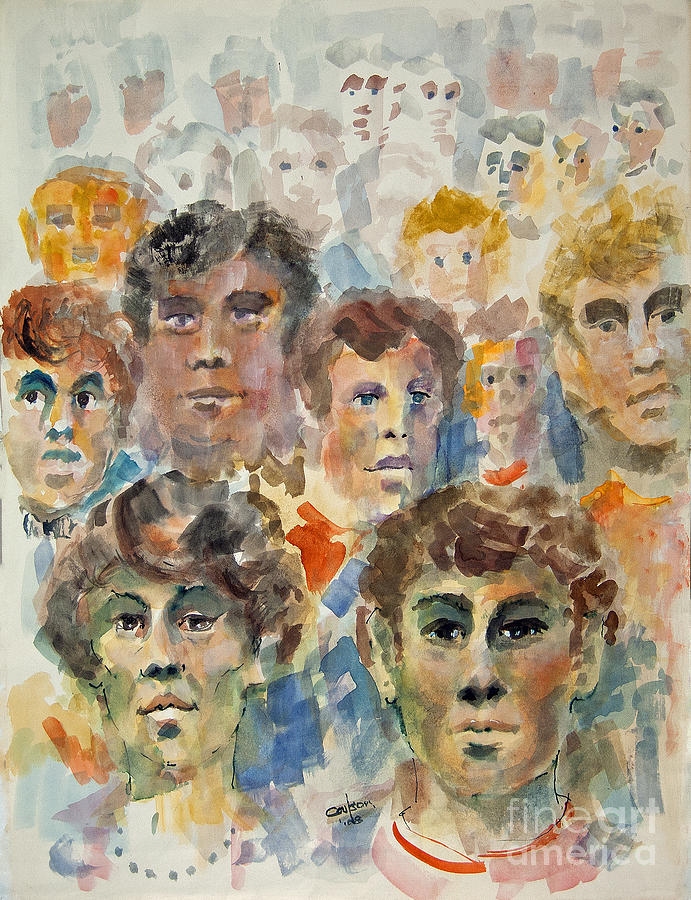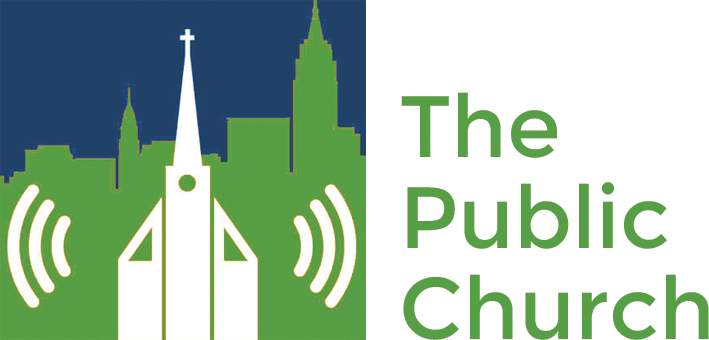Theory
Building the Public Life
Parker Palmer calls for the church to take a role in building experiences of the public life. He asks, “how can the church help the public invent itself, discover itself, empower itself, become itself” (154).
There is an inside and an outside to this endeavor:
1) Inside the church, activities and programs can be viewed for their “public quotient.”
- Does the worship service incorporate voices other than those of the clergy?
- Is there an alternative seating and conversation location for the coffee hour?
- Are learning programs designed only in standard classroom formats?
- Do business meetings afford everyone the chance to speak on every topic?
2) Are new programs inside the church conceived as public events?
- When a speaker or panel is presented, will the format allow full verbal participation?
- Are there opportunities for church members to engage in 1-1 conversation on topics of substance?
3) Outside the church, events of a truly public nature can be created, best through partnership with a local organization.
- Earth Day.
- Climate change teach-in.
- A Hiroshima memorial service.
- Black Lives Matter teach-in.
- Reproductive Rights speak-out.
4) Consider the arts in all three categories above.
- Are professional artists involved? Are amateur artists invited to participate?
- Are lay people given permission, platform and budget to develop skills necessary
- for the expression of their thoughts and feelings on a substantial issue?
- Does the church have an Arts Ministry (see Homepage)?
De-Mystifying the Stranger
Enlarge your world: De-Mystify the Stranger.
 Strangers are our future friends.
Strangers are our future friends.
We find them in public spaces, in public events, where they find us.
Engaging strangers is a society’s path to redemption, where fear is cast out and bread shared.
Is our church only a place where we come together to be alone with God?
Will our church be a place where mere social interaction takes place?
We must awaken to the stranger in our friends, and to the future friend in every stranger.
Make room in your church life for the public realm, the public moment, to flourish.
The public life is redemptive.
Three imperatives for churches:
- Preach and teach a public theology;
Practice the public life within the church;
Reach outside your own walls to create the public moment or place.
Quotes from Parker Palmer, The Company of Strangers.
We have all but lost the vision of the public (23).
As our experience of the public dwindles, we come to regard “the public” either as an empty abstraction or as a sinister, anonymous crowd (24).
We misunderstand the public life if we equate it with politics, the activities of government or electoral partisanship (25).
The public life is more basic than politics.
But, without public life, government and partisanship are a sham.
The heart of public life is simply the interaction of strangers.
Without the two halves of the private and the public realms, life cannot be whole (26).
The church preaches a vision of human unity which means very little if not acted out in public.
The integrity of the church’s vision depends on its public expression; the quality of public life depends on the church acting out its vision.
We need to help each other discover and create occasions for public experience (34).
We need to see that in a healthy society the private and the public are not mutually exclusive or in competition with each other, but work dialectically together, helping to create and nurture each other (35).
The Public and the Private Realms Contrasted
Quotes from Chapter II of Hannah Arendt’s The Human Condition
[edited slightly and re-ordered for understanding out of context]
Besides private life, we are given a sort of second life—the public life.
With word and deed we insert ourselves into the human world, and this insertion is like a second birth, not forced upon us by necessity or by utility, but is a response to our first birth by beginning something new on our own initiative.
The public life amounts to all action and speech: the right words at the right moment are an action.
By speech is not meant persuasion and its rhetoric but the specifically human way of
answering, talking back, and measuring up to whatever happened or was done.
Everything that appears in public can be seen and heard by everybody, or at least has the widest possible publicity.
Action and speech show “who” we are, in contradistinction to “what” we are.
Polis, the city, the public sphere, is the realm of equals, compared with the household which is a center of strict inequality because of its rigid hierarchy (= patriarchy).
The public sphere differs from the household where natural necessity ruled over all activities performed in it.
But today we save speech and action for the private realm (as reflected in television soap opera).
Family and public life merge today in the popular imagination because family has become a
collective concern (social policy and services).
The totally sheltered nature of the home and hearth differ from the merciless exposure of the public life which actually requires great courage.
Private life benefits us as a shelter of the intimate; at the same time, it represents a deprivation of characteristic public fulfillments.
Society is an extension of the private life, leveling demands at us to which public life is opposed: e.g., conformism, fads, fashion, cool, chic.
In the public realm, the individual uniquely experiences individuality through distinction (differentiation) from peers, not excelling over them, but showing who you really, inexchangeably are, that is, not “the best.”
The public realm promotes distinction, difference, diversity.
Social behavior becomes a standard preventing individuality.
The larger the society, the less tolerant it is of deviance and nonconformity.
Society is where our mutual dependence for the sake of life assumes large-scale (and therefore mistaken for public) significance; society is where activities connected with sheer survival are permitted to appear in public.
Private experiences (our passions, thoughts, delights) lead a shadowy existence until transformed for public consumption through story or art.
A Definition of the Public Life: “They were mine, and I theirs.”

“In Louisville, at the corner of Fourth and Walnut, in the center of the shopping district, I was suddenly overwhelmed with the realization that I loved all these people, that they were mine and I theirs, that we could not be alien to one another even though we were total strangers. It was like waking from a dream of separateness, of spurious self-isolation in a special world. . . .
This sense of liberation from an illusory difference was such a relief and such a joy to me that I almost laughed out loud. . . . I have the immense joy of being man, a member of a race in which God Himself became incarnate. As if the sorrows and stupidities of the human condition could overwhelm me, now that I realize what we all are. And if only everybody could realize this! But it cannot be explained. There is no way of telling people that they are all walking around shining like the sun.
Then it was as if I suddenly saw the secret beauty of their hearts, the depths of their hearts where neither sin nor desire nor self-knowledge can reach, the core of their reality, the person that each one is in God’s eyes. If only they could all see themselves as they really are. If only we could see each other that way all the time. There would be no more war, no more hatred, no more cruelty, no more greed. . . . But this cannot be seen, only believed and ‘understood’ by a peculiar gift.”
― Thomas Merton, from Conjectures of a Guilty Bystander

